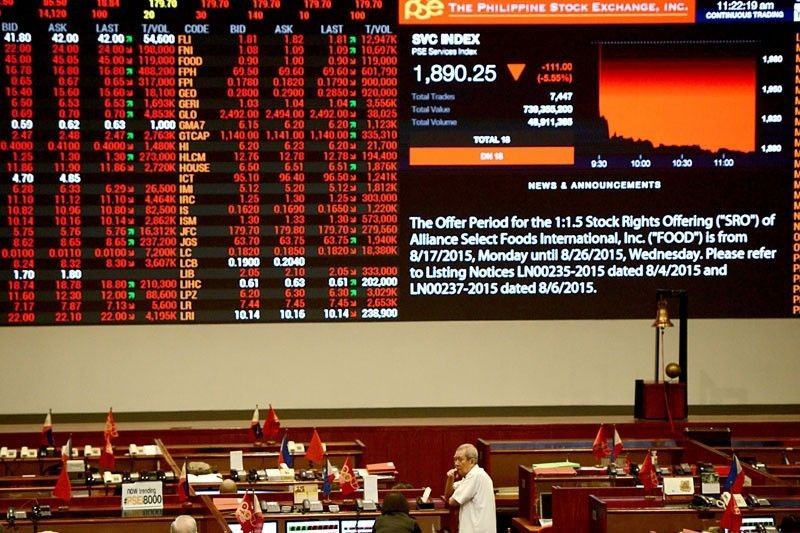Stocks, peso weaken to new lows

MANILA, Philippines — Stocks stumbled back into negative territory and the local currency hit its weakest level in more than 11 years a day after the Bangko Sentral ng Pilipinas (BSP) left interest rates unchanged as investors’ attention shifted to a possible trade war between the US and China.
The stock market’s rally on Thursday turned out to be shortlived as the benchmark Philippine Stock Exchange index again went into a tailspin yesterday, shedding 153.65 points or 1.89 percent to finish at 7,970.80 – almost the same level as last March 21, the lowest mark for the year.
Astro del Castillo, managing director at First Grade Finance Inc., said market investors were spooked by the possibility of a trade war between the US and China.
“The reality of a trade war between the two economic powers is scaring the global market. The sound of war is getting louder. The global economy will be again at risk,” Del Castillo said.
However, he said it is expected that a somber mood would prevail during next week’s shortened trading session due to the Lenten break.
“Expect a somber mood next week given the Holy Week. News from overseas will dictate the movement of our local market. Given the risks, it seems like the bears will be here to stay,” he said.
Luis Limlingan of Regina Capital likewise said markets around the world were spooked by trade war jitters.
“A trade war fear brought down the value of Philippine shares. All major regional indexes dropped broadly and volatility spiked as the Trump administration’s plans to announce new trade restraints against China renewed fears about a potential trade war that could dent economic growth,” he said.
Thus, he said the global flash data also came in weaker than expected, added to the selling pressure. European stocks finished at their lowest level in three weeks, hit hard by worries about a global trade war as the US took steps toward slapping tariffs on China.
On Thursday, President Trump escalated economic tensions with China by unveiling an extensive new trade restrictions that would effectively block $50 billion in Chinese imports from entering the United States.
China, however, said it would “fight to the end” in any trade war over US tariffs, with measures against $3 billion worth of US steel products.
Meanwhile, the peso shed 19 centavos yesterday, closing at an intra-day low of 52.39 to $1 from Thursday’s 52.2 to $1.
This was the weakest level for the peso since closing at 52.745 to $1 on July 19, 2006.
The peso has emerged as the weakest performing currency in the region, shedding more than four percent since the start of the year. The BSP has allowed the modest and gradual depreciation of the peso consistent with economic fundamentals.
Economists said the weakening of the local currency complements the Philippines’ gradual shift from a consumption-led to an investment-led economy and bolsters export price competitiveness.
BSP Governor Nestor Espenilla Jr. said a flexible exchange rate is an integral part of the central bank’s policy toolkit to maintain monetary stability and to ensure the sustainability of the balance of payments.
“We do not target an exchange rate level but we carefully watch out for excessive volatility that can disrupt the economy. Our ideal is a market-determined exchange rate that offers no persistent one-way bets to anyone,” Espenilla said.
The BSP usually intervenes by buying or selling in the foreign exchange market to smoothen excessive currency volatility.
BSP Deputy Governor Diwa Guinigundo had said there is higher demand for US dollars due to robust imports particularly for capital equipment and raw materials to support the growing economy.
He added there is higher demand for investments as well as debt servicing.
“At this point the peso continues to reflect market fundamentals. There is more demand for foreign exchange because the economy continues to grow.
Traders said investors recalibrated their portfolio and shifted funds to the US after the US Federal Reserve headed by new chair Jerome Powell lifted rates and is on track with two more rate increases this year.
On the other hand, the BSP’s Monetary Board kept interest rates steady despite raising its inflation forecasts for this year to 4.5 percent instead of 4.3 percent as it sees the consumer price index easing to 3.5 percent next year using the 2006 base year. - With Lawrence Agcaoili
- Latest
- Trending



























